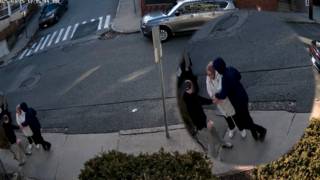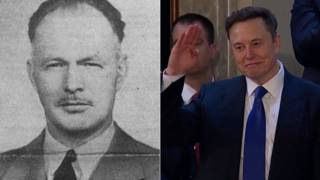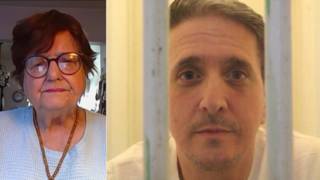
Arizona’s execution of Joseph Wood was supposed to take about 10 minutes, but stretched out for nearly two hours Wednesday night as he gasped for air after being injected with a controversial two-drug combination of the sedative midazolam and the painkiller hydromorphone. Halfway through the ordeal his lawyers filed an emergency motion to stop the execution, saying it violated Wood’s Eighth Amendment right against cruel and unusual punishment. This was a “predictable consequence of Arizona’s experimental drug procedure and the fact that Arizona shrouded its procedure in secrecy,” says Megan McCracken, an attorney with the Death Penalty Clinic at the University of California, Berkeley School of Law. Wood was killed after the U.S. Supreme Court overturned a lower court ruling that put the execution on hold. The Ninth U.S. Circuit Court of Appeals had initially sided with Wood’s request that Arizona disclose its lethal injection methods and the source of the drugs involved.
Transcript
AMY GOODMAN: We end today in Arizona looking at last night’s execution and how a procedure that usually takes 10 minutes instead took one hour and 57 minutes, the execution that took place of Joseph Wood. He gasped for air after he was injected with a controversial two-drug combination. Media witnesses described what they saw next.
TROY HAYDEN: Joe Wood is dead, but it took him two hours to die. And to watch a man lay there for an hour and 40 minutes gulping air, I can liken it to if you catch a fish and throw it on the shore, the way the fish opens and closes its mouth. So, the two drugs worked: He eventually died. But I can’t imagine this is what the criminal justice system had hoped for when it came up with this new drug protocol. And it was tough for everybody in that room. And at a certain point, you wondered if he was ever going to die. I mean, it was serious.
AMY GOODMAN: That last voice you heard was reporter Troy Hayden. For more, we’re joined from Philadelphia by Megan McCracken, an attorney with the University of California, Berkeley School of Law’s Death Penalty Clinic.
Welcome back to Democracy Now!, Megan. Can you explain what happened last night, and we only have a few minutes, but also the fact that the lawyers for the man who was being executed actually left the death chamber to appeal his execution in the midst of it, because it went on for so long as he gasped for air?
MEGAN McCRACKEN: [inaudible] in order to make contact with their office and ask other lawyers to go into court to seek an order to stop the execution. One lawyer did stay in the execution viewing area the entire time, so not all of the lawyers left. The execution, as you said, took an extraordinarily long time, almost two hours. Mr. Wood was breathing and gasping for air and struggling for an hour and 40 minutes. It was an extremely disturbing, prolonged execution, which really is the predictable consequence of Arizona’s experimental drug procedure and the fact that Arizona shrouded its procedure in secrecy.
AMY GOODMAN: But can you further talk about where the drug came from, the legal attempts to stop the execution before the fact that a court had stopped the execution in that day?
MEGAN McCRACKEN: Right, two courts had issued injunctions on the execution, not really stopping the execution, but saying that the department could not move forward with the execution without first disclosing additional information about the procedures. I cannot tell you where the drugs came from because the Department of Corrections has refused to disclose that information. The sum total of the information the department disclosed was the name of the two drugs that would be used and the doses. The department refused to disclose, despite repeated requests from Mr. Wood’s lawyers, where the drugs came from, their lot numbers, their expiration dates, were they FDA-approved, what pharmaceutical company made them, did they obtain them legally. They refused to disclose information about the qualifications of the execution team members. And they refused to disclose information about how they developed this procedure. They took the combination of drugs from Ohio, the only other state to have ever used it, and in that use it was also a botched execution. So that’s the procedure they took, and then they altered the doses. But they refused to disclose information about how they reached the new doses and why they thought that would work better than it worked in the also botched execution of Dennis McGuire in January.
AMY GOODMAN: Megan, there’s an amazing quote of dissent by the chief judge of the Ninth U.S. Circuit Court of Appeals, who wrote a blistering critique of lethal injection in Wood’s earlier appeal. After the court decided not to delay the execution until more was disclosed about the drugs to be used, Judge Alex Kozinski wrote, quote, “If some states and the federal government wish to continue carrying out the death penalty, they must … return to more primitive—and foolproof—methods of execution. The guillotine is probably best but seems inconsistent with our national ethos. And the electric chair, hanging and the gas chamber are each subject to occasional mishaps. The firing squad,” he wrote, “strikes me as the most promising. Eight or ten large-caliber rifle bullets fired at close range can inflict massive damage, causing instant death every time.” We only have 20 seconds. Can you respond to this?
MEGAN McCRACKEN: Well, what’s interesting about Judge Kozinski’s dissent is that he was seeking to engage in a discussion about how we carry out executions, and so it’s ironic that he wrote that as a dissent to an opinion that the Arizona Department of Corrections ought to disclose additional information, given that he wanted to engage in discourse.
AMY GOODMAN: Megan McCracken, thank you for spending this time with us, attorney with the UC Berkeley School of Law’s Death Penalty Clinic.
And that does it for our broadcast. Democracy Now! is hiring. We have an opening for an on-air graphic designer. Go to democracynow.org for details. I’ll be speaking at Martha’s Vineyard Saturday night, July 26, at 7:00. Check out the details at democracynow.org.












Media Options